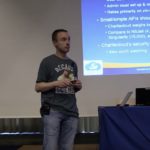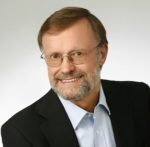Today Sylabs announced the release of SingularityPRO 3.1 in what the company is calling a watershed moment for enterprise customers everywhere. “SingularityPRO 3.1 is the most highly anticipated release of our enterprise software ever,” said Gregory Kurtzer, founder and CEO of Sylabs. “With this release, we’re rapidly advancing container science, making it a truly opportune time for those seeking to containerize the most demanding enterprise performance computing workloads in the most trusted way.”
Singularity: Container Workflows for Compute
Greg Kurtzer from Sylabs gave this talk at the Stanford HPC Conference. “Singularity is a widely adopted container technology specifically designed for compute-based workflows making application and environment reproducibility, portability and security a reality for HPC and AI researchers and resources. Here we will describe a high-level overview of Singularity and demonstrate how to integrate Singularity containers into existing application and resource workflows as well as describe some new trending models that we have been seeing.”
Video: Container Mythbusters
Michael Jennings from LANL gave this talk at the Stanford HPC Conference. “As containers initially grew to prominence within the greater Linux community, particularly in the hyperscale/cloud and web application space, there was very little information out there about using Linux containers for HPC at all. In this session, we’ll confront this problem head-on by clearing up some common misconceptions about containers, bust some myths born out of misunderstanding and marketing hype alike, and learn how to safely (and securely!) navigate the Linux container landscape with an eye toward what the future holds for containers in HPC and how we can all get there together!”
HPC in the Hands of Every Engineer – With Software Containers
In this special guest feature, Wolfgang Gentzsch from The UberCloud writes that we’ve never been so close to ubiquitous computing for researchers and engineers. “High-performance computing continues to progress, but the next big step toward ubiquitous HPC is coming from software container technology based on Docker, facilitating software packaging and porting, ease of access and use, service stack automation and self-service, and simplifying software maintenance and support.”
Video: HPC Containers – Democratizing HPC
In this video from SC18 in Dallas, CJ Newburn from NVIDIA describes how developers can quickly containerize their applications and how users can benefit from running their workloads with containers from the NVIDIA GPU Cloud. “A container essentially creates a self contained environment. Your application lives in that container along with everything the application depends on, so the whole bundle is self contained.”
VMware Powers Machine Learning & HPC Workloads
In this video from SC18 in Dallas, Ziv Kalminovich from VMware describes how the company’s powerful virtualization capabilities bring flexibility and performance to HPC workloads. “With VMware, you can capture the benefits of virtualization for HPC workloads while delivering performance that is comparable to bare-metal. Our approach to virtualizing HPC adds a level of flexibility, operational efficiency, agility and security that cannot be achieved in bare-metal environments—enabling faster time to insights and discovery.”
Containers: Shifter and Singularity on Blue Waters
In this video from the Blue Waters 2018 Symposium, Maxim Belkin presents a tutorial on Containers: Shifter and Singularity on Blue Waters. “Container solutions are a great way to seamlessly execute code on a variety of platforms. Not only they are used to abstract away from the software stack of the underlying operating system, they also enable reproducible computational research. In this mini-tutorial, I will review the process of working with Shifter and Singularity on Blue Waters.”
NVIDIA Simplifies Building Containers for HPC Applications
In this video, CJ Newburn from NVIDIA describes how users can benefit from running their workloads in the NVIDIA GPU Cloud. “A container essentially creates a self contained environment. Your application lives in that container along with everything the application depends on, so the whole bundle is self contained. NVIDIA is now offering a script as part of an open source project called HPC Container Maker, or HPCCM that makes it easy for developers to select the ingredients they want to go into a container, to provide those ingredients in an optimized way using best-known recipes.”
Containers Using Singularity on HPC
Abhinav Thota, from Indiana University gave this talk at the 2018 Swiss HPC Conference. “Container use is becoming more widespread in the HPC field. There are various reasons for this, including the broadening of the user base and applications of HPC. One of the popular container tools on HPC is Singularity, an open source project coming out of the Berkeley Lab. In this talk, we will introduce Singularity, discuss how users of Indiana University are using it and share our experience supporting it. This talk will include a brief demonstration as well.”
Why UIUC Built HPC Application Containers for NVIDIA GPU Cloud
In this video from the GPU Technology Conference, John Stone from the University of Illinois describes how container technology in the NVIDIA GPU Cloud help the University distribute accelerated applications for science and engineering. “Containers are a way of packaging up an application and all of its dependencies in such a way that you can install them collectively on a cloud instance or a workstation or a compute node. And it doesn’t require the typical amount of system administration skills and involvement to put one of these containers on a machine.”












